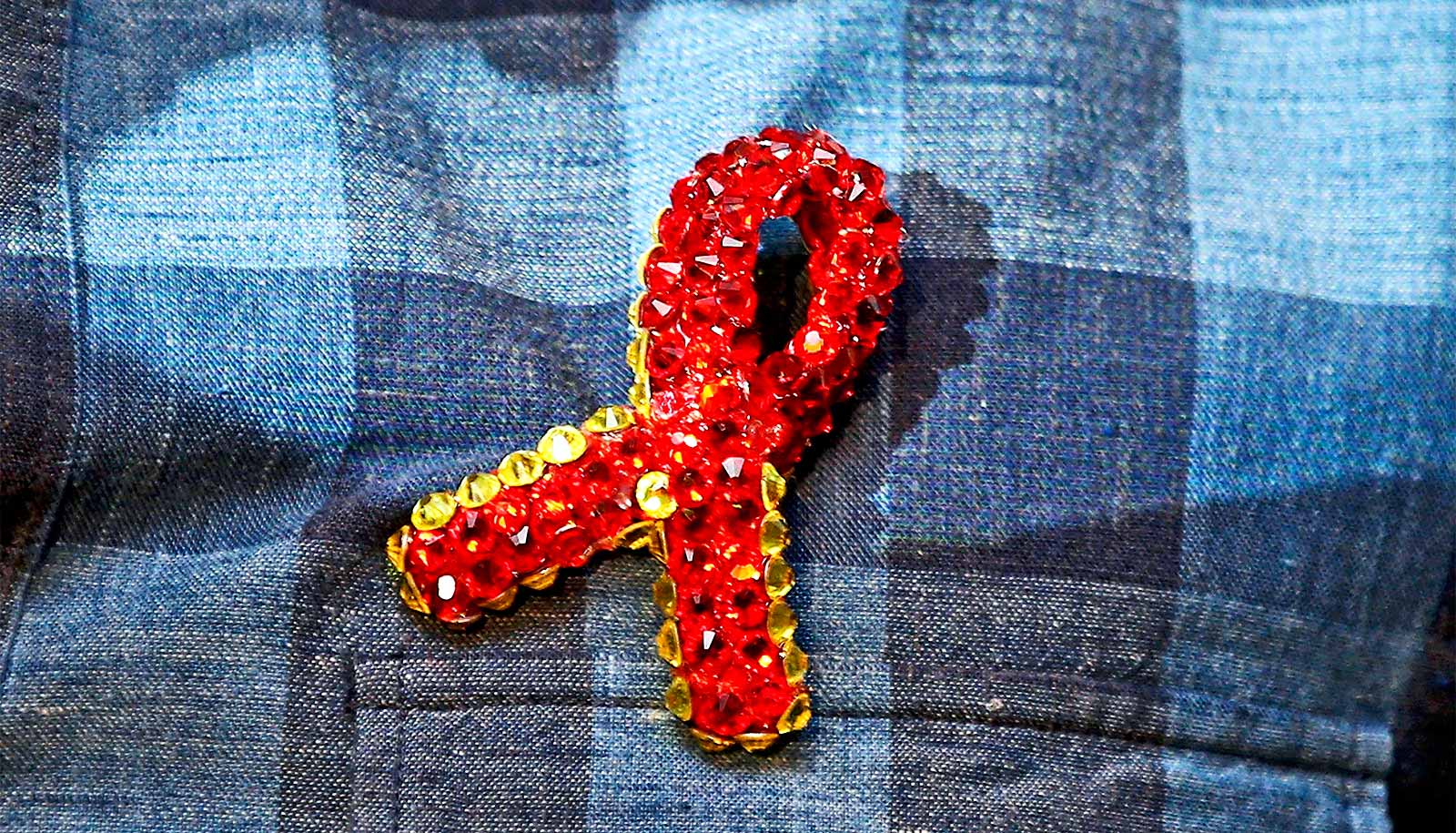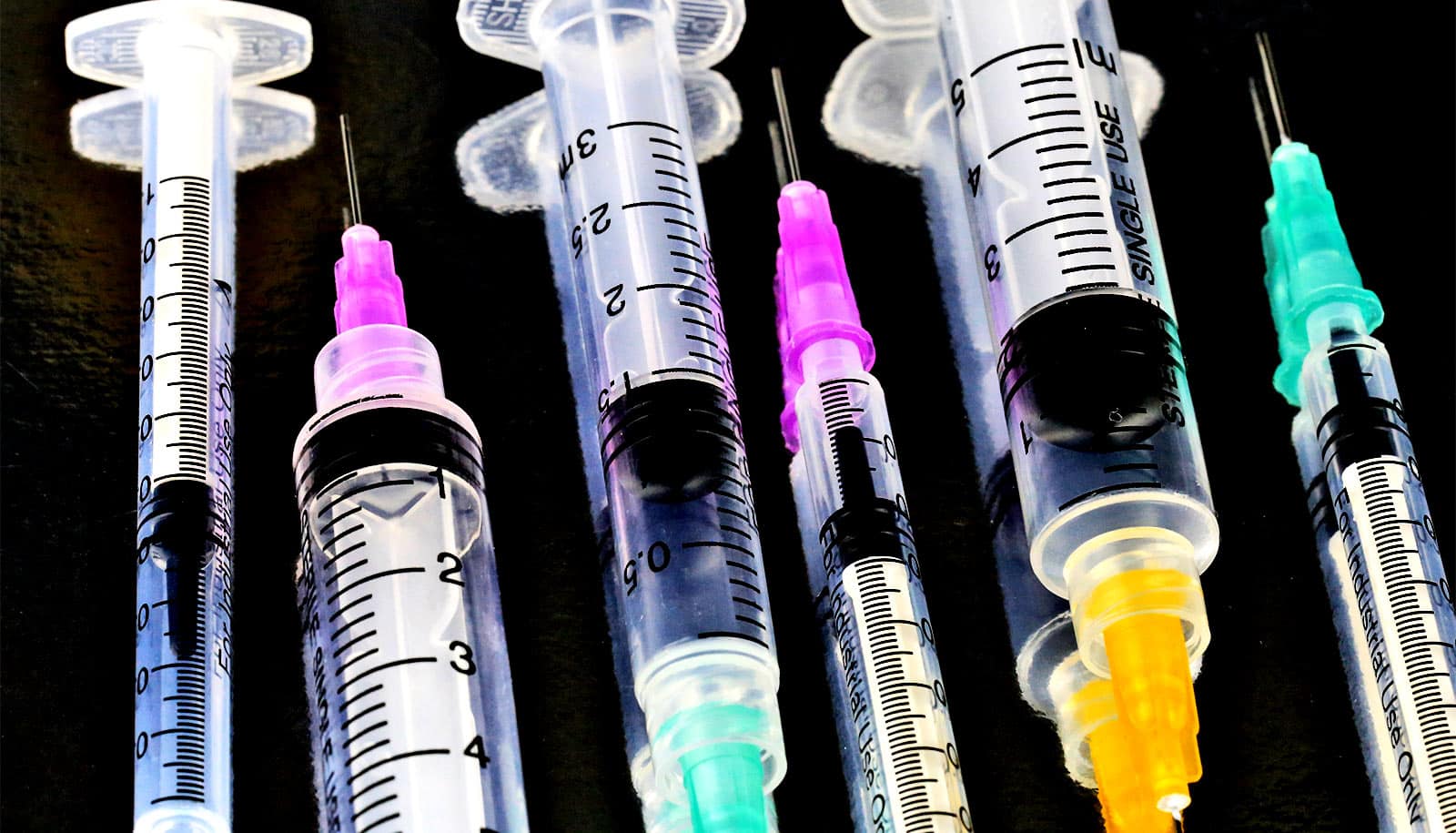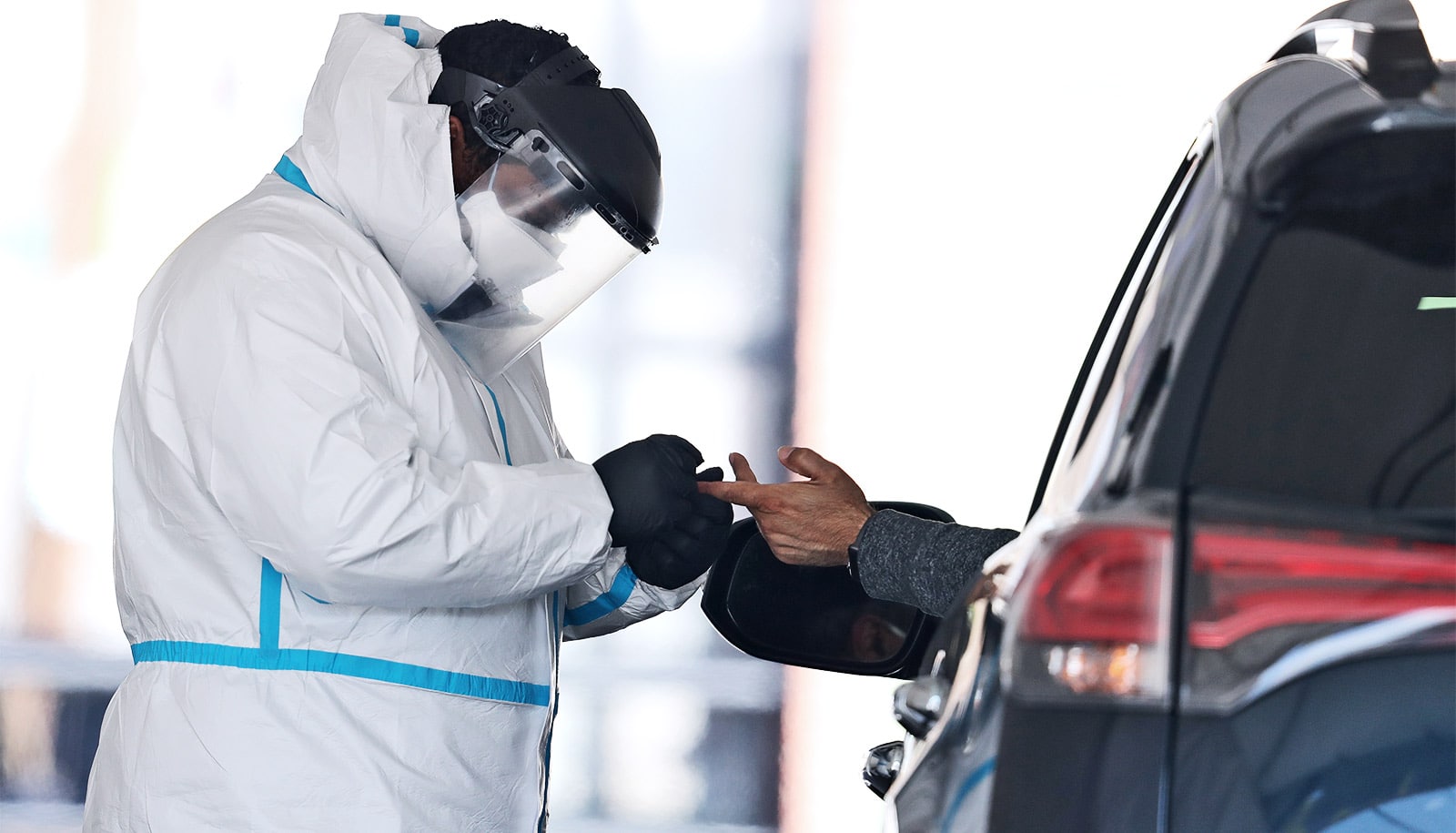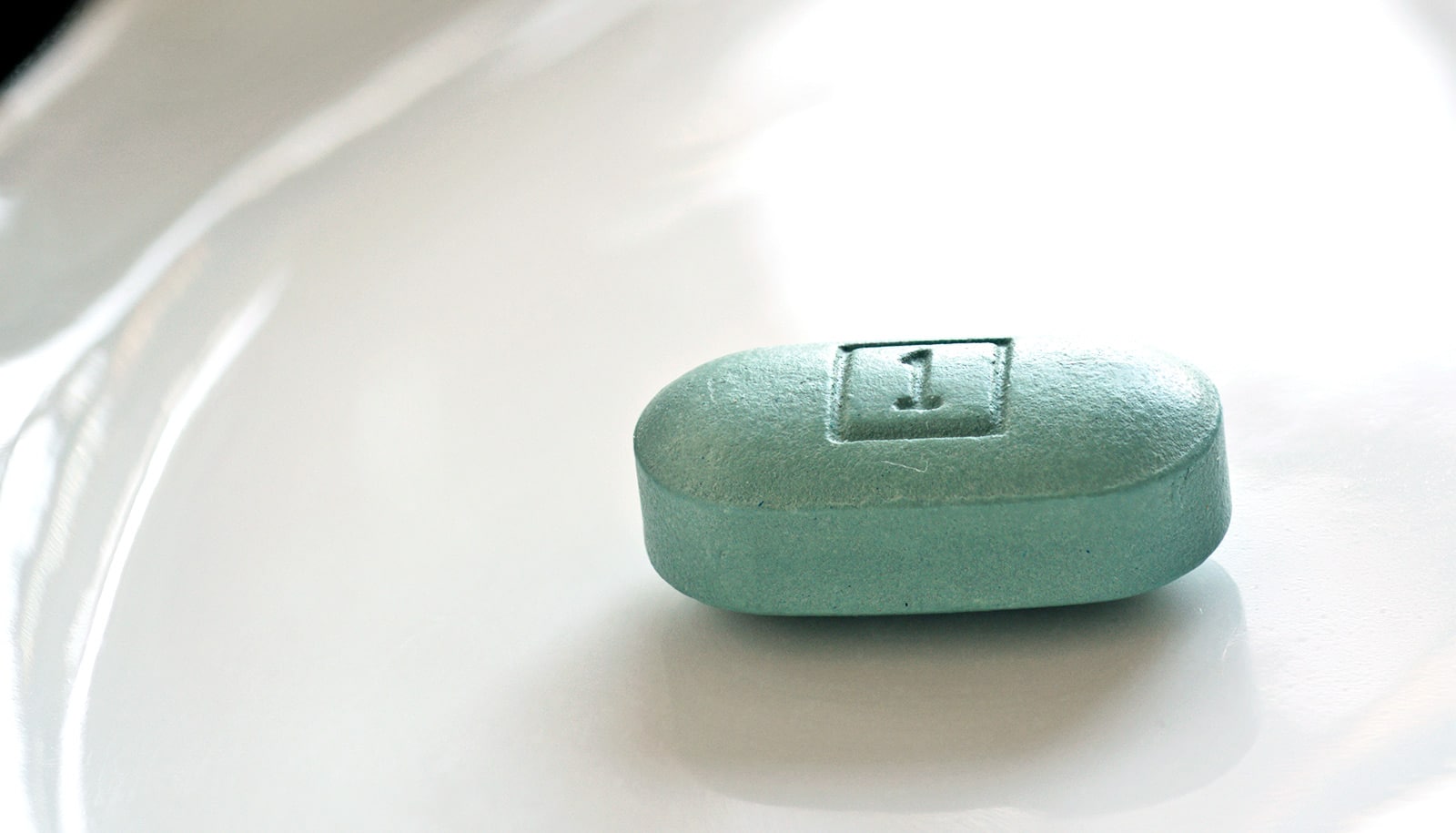A new type of vaccination can substantially enhance and sustain protection from HIV in monkeys, researchers report.
The findings carry broad implications for immunologists pursuing vaccines for the coronavirus and better vaccines for other diseases, says Bali Pulendran, professor of pathology and of microbiology and immunology at Stanford University and co-senior author of the paper in Nature Medicine.
“Despite over three decades of intense research, no preventive HIV vaccine is yet in sight.”
The key to the new vaccine’s markedly improved protection from viral infection is its ability—unlike almost all vaccines now in use—to awaken a part of the immune system that most current vaccines leave sleeping.
“Most vaccines aim at stimulating serum immunity by raising antibodies to the invading pathogen,” says Pulendran, referring to antibodies circulating in blood.
“This vaccine also boosted cellular immunity, the mustering of an army of immune cells that chase down cells infected by the pathogen. We created a synergy between these two kinds of immune activity.”
Some 38 million people worldwide are living with AIDS, the once inevitably fatal disease HIV causes. While a mix of antiviral agents can hold HIV in check, it continues to infect 1.7 million people annually and is the cause of some 770,000 deaths each year.
Fighting with both arms untied
“Despite over three decades of intense research, no preventive HIV vaccine is yet in sight,” Pulendran says. Early hopes for such a vaccine, based on a trial in Thailand whose results were published in 2012, were dashed just months ago when a larger trial of the same vaccine in South Africa stopped after a preliminary assessment indicated that it barely worked.
Vaccines are designed to arouse the adaptive immune system, which responds by generating cells and molecular weaponry that target a particular pathogen, as opposed to firing willy-nilly at anything that moves.
The adaptive immune response consists of two arms: serum immunity, in which B cells secrete antibodies that can glom onto and neutralize a microbial pathogen; and cellular immunity, in which killer T cells roam through the body inspecting tissues for signs of viruses and, upon finding them, destroying the cells that harbor them.
But most vaccines push the adaptive immune system to fight off infections with one of those arms tied behind its back.
“All licensed vaccines to date work by inducing antibodies that neutralize a virus. But inducing and maintaining a high enough level of neutralizing antibodies against HIV is a demanding task,” Pulendran says. “We’ve shown that by stimulating the cellular arm of the immune system, you can get stronger protection against HIV even with much lower levels of neutralizing antibodies.”
In the new study, the researchers employed a two-armed approach geared toward stimulating both serum and cellular immunity. They inoculated three groups of 15 rhesus macaques over a 40-week period.
The first group received several sequential inoculations of Env, a protein on the virus’s outer surface that’s known to stimulate antibody production, plus an adjuvant, a chemical combination often used in vaccines to beef up overall immune response.
Researchers similarly inoculated the second group but gave them additional injections of three different kinds of viruses, each of which researchers modified to be infectious but not dangerous. Each modified virus contained an added gene for a viral protein, Gag, that’s known to stimulate cellular immunity.
A third group, the control group, received injections containing only the adjuvant.
Longer protection from HIV
At the end of the 40-week regimen, all animals were allowed to rest for an additional 40 weeks, then given booster shots of just the Env inoculation. After another rest of four weeks, they were subjected to 10 weekly exposures to SHIV, the simian version of HIV.
Monkeys who received only the adjuvant became infected. Animals in both the Env and Env-plus-Gag groups experienced significant initial protection from viral infection. Notably, though, several Env-plus-Gag animals—but none of the Env animals—remained uninfected even though they lacked robust levels of neutralizing antibodies. Vaccinologists generally have considered the serum immune response—the raising of neutralizing antibodies—to be the defining source of a vaccine’s effectiveness.
Even more noteworthy was a pronounced increase in the duration of protection among animals getting the Env-plus-Gag combination. Following a 20-week break, six monkeys from the Env group and six from the Env-plus-Gag group received additional exposures to SHIV. This time, four of the Env-plus-Gag animals, but only one of the Env-only animals, remained uninfected.
Pulendran says he suspects this improvement resulted from the vaccine-stimulated production of immune cells called tissue-resident memory T cells. These cells migrate to the site where the virus enters the body, he says, and park themselves there for a sustained period, serving as sentinels. If they see the virus again, these cells jump into action, secreting factors that signal other immune-cell types in the vicinity to turn the tissue into hostile territory for the virus.
“These results suggest that future vaccination efforts should focus on strategies that elicit both cellular and neutralizing-antibody response, which might provide superior protection against not only HIV but other pathogens such as tuberculosis, malaria, the hepatitis C virus, influenza, and the pandemic coronavirus strain as well,” Pulendran says.
Additional researchers from Stanford, Emory University, and the University of Minnesota, Duke University, Louisiana State University, Cornell University, 3M Corp., and Biolegend contributed to the work. Support for the research came from the National Institutes of Health, the Bill and Melinda Gates Foundation, and Stanford.
Source: Stanford University



